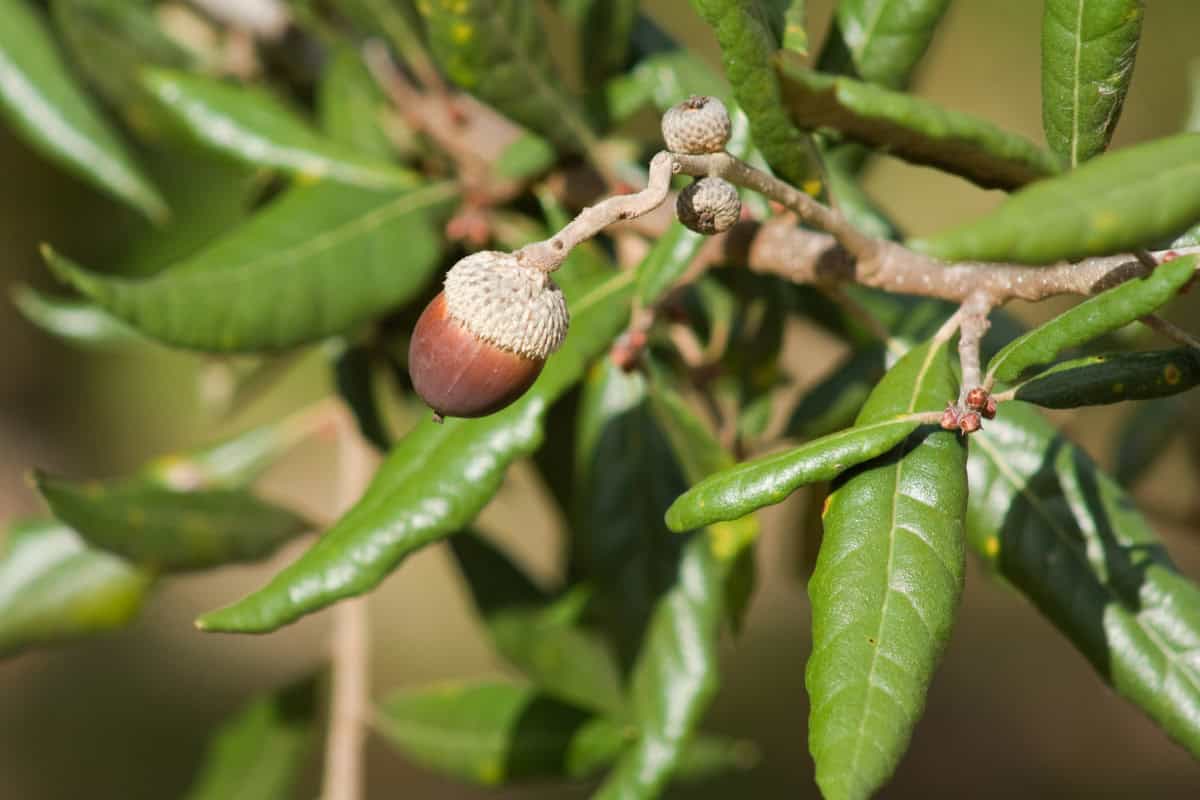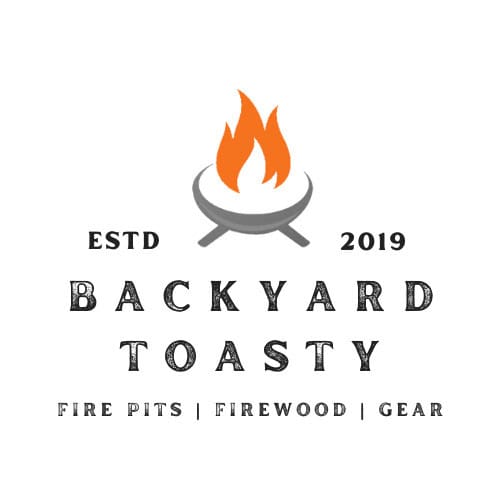
This comprehensive Live Oak firewood profile explores the iron-hard giant of the South, delivering 25,000-28,000 BTUs per cord with extraordinary density and unmatched durability characteristics.
Known as one of the hardest woods in North America and revered for its legendary toughness, Live Oak offers exceptional heat output for the rare occasions when this precious wood becomes available for burning.
- Quick Reference Stats: Live Oak Firewood Profile
- Overview & Identification
- Geographic Distribution
- Burning Characteristics
- Sensory Experience
- Processing & Preparation
- Specialized Uses
- Pros & Cons
- Best Practices & Tips
- Bottom Line: Live Oak Firewood Profile
- 🌳 Live Oak Quick Reference Table 🔥
- Related Resources: Live Oak Firewood Profile
Quick Reference Stats: Live Oak Firewood Profile
- Wood Type: Hardwood (white oak family, evergreen)
- BTU Rating: 25,000-28,000 BTUs per cord
- Ease of Splitting: Extremely Difficult (1.5/5 scale)
- Seasoning Time: 24-36 months
- Smoke Production: Very Low
- Spark/Pop Factor: Very Low
- Scent Profile: Mild – Clean, subtle oak aroma
Overview & Identification
This live oak firewood profile reveals how this species represents the ultimate in hardwood density and durability, offering exceptional heat output from one of North America’s most legendary trees.
This evergreen oak provides outstanding burning performance when available, but is rarely used as firewood due to its extreme value as a landscape specimen, incredible processing difficulty, and cultural significance.
The distinctive spreading crown and leathery evergreen leaves make identification unmistakable for this southern icon.
Common Names: Live Oak, Southern Live Oak, Coast Live Oak
Scientific Name: Quercus virginiana (family Fagaceae)
Tree Characteristics: Large evergreen oak reaching 40-80 feet with massive, spreading crown often wider than tall. Features small, leathery evergreen leaves and incredibly dense, durable wood. Can live over 1,000 years.
Geographic Distribution
Where You’ll Find It: Southeastern United States coastal regions from Virginia to Florida and west to Texas. Most abundant along Gulf Coast and in Texas
Availability: Extremely limited availability – typically only from storm damage, construction clearing, or tree service operations
Growing Conditions: Thrives in coastal conditions with salt tolerance. Prefers well-drained soils but adapts to various conditions. Iconic landscape tree with protected status in many areas.
Burning Characteristics
Heat Output & Performance
- BTU Content: Exceptional performance delivering among the highest heat output available from any North American wood
- Burn Duration: Burns extremely long with outstanding heat retention throughout entire burning cycle
- Coaling Properties: Forms superb coals that maintain heat for exceptionally long periods
- Flame Characteristics: Burns hot with steady, intense flames transitioning to remarkable coal beds
Ignition & Fire Management
- Ease of Lighting: Extremely challenging to ignite due to incredible density – requires very well-established fire
- Best Fire Stage: Outstanding primary fuel for serious heating once properly ignited
- Burn Rate: Extremely slow consumption provides maximum heat output per piece
- Heat Consistency: Exceptional reliability with steady, intense heat delivery over very long periods
Sensory Experience
Smoke Profile
- Smoke Volume: Very low smoke production when properly seasoned – excellent white oak characteristics
- Smoke Color: Minimal, clean smoke with excellent dispersal and visual appeal
- Smoke Flavor: Clean, mild flavor suitable for cooking applications without overpowering
- Creosote Production: Very low due to clean burning characteristics and extremely low moisture
Sound & Visual
- Crackling/Popping: Very quiet, steady burning with minimal crackling or popping
- Sparking Tendency: Extremely low spark production provides excellent safety characteristics
- Flame Appearance: Steady, intense flames with exceptional heat radiating properties
Aroma
- Burning Scent: Clean, mild oak fragrance with subtle complexity
- Pleasant Factor: Pleasant traditional aroma that’s widely appreciated but not overwhelming
- Intensity: Light to moderate aromatic presence that complements rather than dominates
Processing & Preparation
Splitting Characteristics
- Ease of Splitting: Extremely difficult due to incredible density and interlocked grain
- Grain Pattern: Dense, interlocked grain that resists all but the most powerful splitting equipment
- Tools Needed: High-tonnage hydraulic splitter essential – hand splitting nearly impossible
- Best Splitting Conditions: Split immediately when green – becomes virtually impossible when seasoned
Seasoning Requirements
- Drying Time: 24-36 months minimum for adequate seasoning due to extreme density
- Moisture Content: Takes exceptionally long time to reach target moisture due to incredible density
- Seasoning Tips: Aggressive splitting absolutely essential – large pieces may never dry adequately
- Storage Considerations: Requires excellent air circulation and extraordinary patience
Processing Notes
- Chainsaw Considerations: Extremely hard wood that severely challenges chainsaw equipment and dulls chains rapidly
- Bark Characteristics: Relatively smooth bark compared to other mature oaks
- Handling: Extraordinarily heavy, dense wood – among the most challenging to handle and transport
- Safety Considerations: Extreme density can damage equipment and requires specialized processing techniques
Specialized Uses
Rare Opportunity Applications
- Specimen Burning: Reserved for special occasions due to rarity and processing investment
- Premium Heating: Outstanding choice when maximum heat output is critical
- Cultural Significance: Burning carries historical and cultural weight in southern regions
- Educational Value: Demonstrates extreme end of hardwood density and performance spectrum
Historical & Traditional Applications
- Shipbuilding Heritage: Historically prized for naval construction due to incredible durability
- Traditional Crafts: Limited use in specialized woodworking requiring ultimate durability
- Cultural Symbol: Represents strength and endurance in southern cultural traditions
- Scientific Interest: Valuable for understanding extreme wood density characteristics
Pros & Cons
Advantages
- Among highest BTU output available from North American woods
- Burns for extraordinarily long periods with minimal consumption
- Exceptional coaling properties for extended heat retention
- Burns extremely clean with minimal smoke production
- Outstanding safety profile with virtually no spark production
- Extremely low ash production
- Clean burning excellent for any cooking applications
- Legendary durability and density characteristics
- Cultural and historical significance
- Ultimate demonstration of premium hardwood performance
Disadvantages
- Extremely limited availability – rarely obtainable for firewood use
- Virtually impossible to split without high-tonnage hydraulic equipment
- Extraordinary seasoning time requires years of patient planning
- Extremely heavy weight makes handling extraordinarily challenging
- Can damage standard processing equipment
- May be prohibited to cut or burn in some protected areas
- Extremely expensive when available due to rarity and processing difficulty
- Cultural significance may make burning seem inappropriate
- Nearly impossible to ignite without substantial established fire
- Processing requires specialized equipment and techniques
Best Practices & Tips
Rare Opportunity Management
- Immediate Processing: Process immediately when available while wood is green
- Equipment Requirements: Ensure access to high-tonnage hydraulic splitter before acquisition
- Long-term Planning: Plan for multi-year seasoning cycle with excellent storage conditions
- Respectful Use: Consider cultural significance and use appropriately for special occasions
Processing Strategies
- Professional Processing: Consider professional processing due to equipment demands
- Safety Priority: Use extreme caution with equipment that may be challenged by wood density
- Size Management: Cut to smallest manageable sizes before attempting to split
- Quality Preservation: Protect processed wood from moisture during extended seasoning
Cultural Considerations
- Regional Respect: Understand cultural significance in southern regions before burning
- Sustainable Sourcing: Only acquire from appropriate sources like storm damage or necessary removal
- Educational Sharing: Share knowledge about Live Oak characteristics with others
- Appropriate Use: Reserve for occasions that justify using such a rare and precious resource
Bottom Line: Live Oak Firewood Profile
This live oak firewood profile demonstrates how this oak type represents the ultimate firewood experience – a wood so extraordinary in its characteristics that it transcends normal firewood categories to become a rare opportunity for those fortunate enough to encounter it.
While the processing challenges and cultural considerations make it impractical as regular firewood, the exceptional performance and historical significance make any encounter with Live Oak firewood a memorable experience.
Best For: Rare special occasions, users with hydraulic splitters, cultural appreciation, educational purposes, and those seeking the ultimate hardwood experience
Skip If: You need readily available wood, lack specialized equipment, are a beginner, need quick processing, or don’t have years for seasoning
For quick reference while planning your Live Oak firewood adventure, use this comprehensive table to review all the key specifications and characteristics at a glance.
🌳 Live Oak Quick Reference Table 🔥
Live Oak stands as the ultimate hardwood experience – a legendary species delivering unmatched 28,000 BTUs with extraordinary coaling ability and marathon burn times. This rare coastal treasure demands patience and hydraulic power but rewards you with the pinnacle of firewood performance. Reserved for special occasions and true hardwood connoisseurs! 👑✨
| Characteristic | Rating/Value | Notes |
|---|---|---|
| 🔥 BTU per Cord | 25,000-28,000 | Among highest available |
| ⚖️ Density | Extreme | Legendary hardness |
| ⏰ Seasoning Time | 24-36 months | Extraordinary patience required |
| 🪓 Splitting Difficulty | Extremely Difficult (1.5/5) 💪 | High-tonnage hydraulic essential |
| 💨 Smoke Production | Very Low | Exceptionally clean |
| ✨ Spark/Pop Factor | Very Low | Outstanding safety |
| 🚀 Ignition Ease | Extremely Challenging 🔥 | Requires substantial fire |
| ⚡ Burn Rate | Extremely Slow | Maximum burn time |
| 🔥 Coaling Ability | Exceptional | Legendary coal formation |
| 🌸 Scent Quality | Pleasant 🍃 | Clean, mild oak aroma |
| 🍳 Cooking Suitability | Excellent | Clean burn, sustained heat |
| 🌱 Sustainability | Protected ⚠️ | Limited appropriate sources |
| 📍 Regional Availability | Southern coastal | Extremely limited |
| 💰 Cost Level | Rare/Expensive 💎 | Cultural and processing value |
| 🎯 Best Use | Special occasions | Ultimate hardwood experience |
| 🏆 Overall Rating | Legendary among hardwoods |
Related Resources: Live Oak Firewood Profile
Last updated: 8/16/2025


